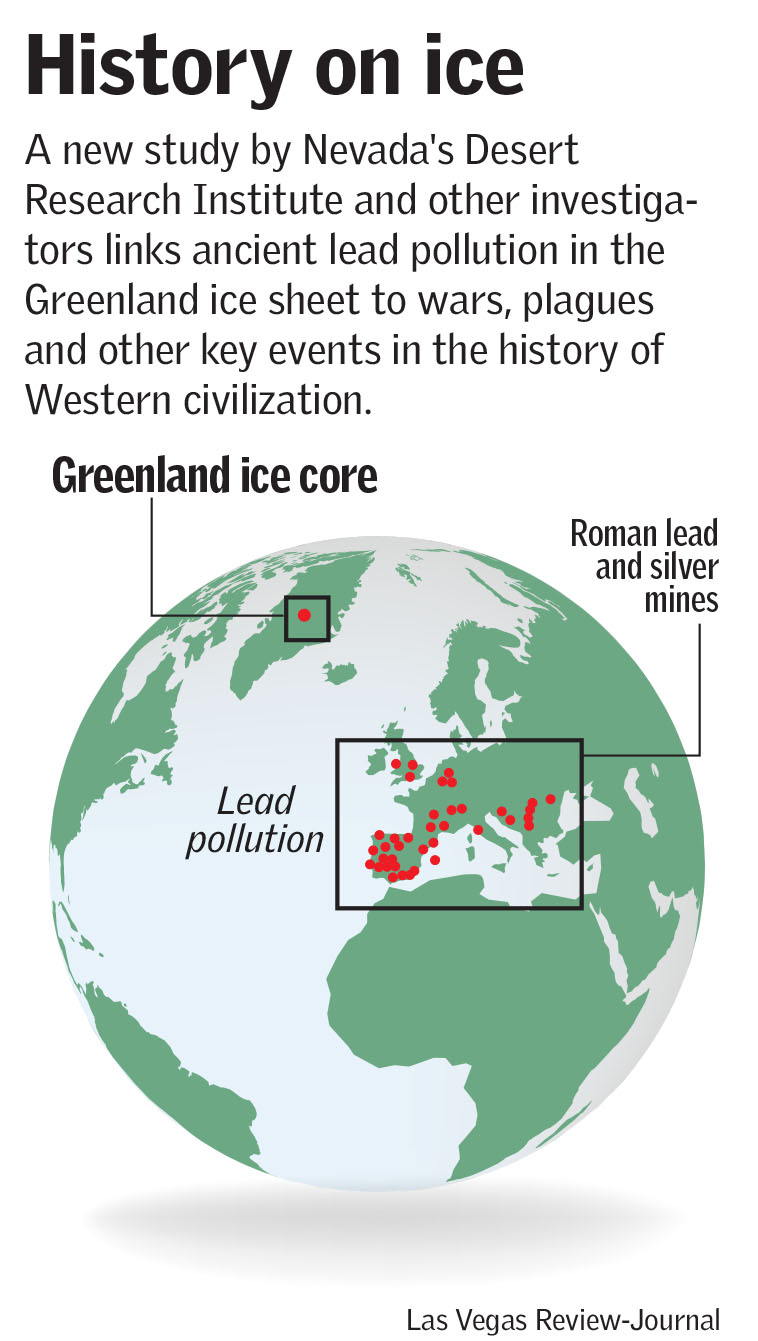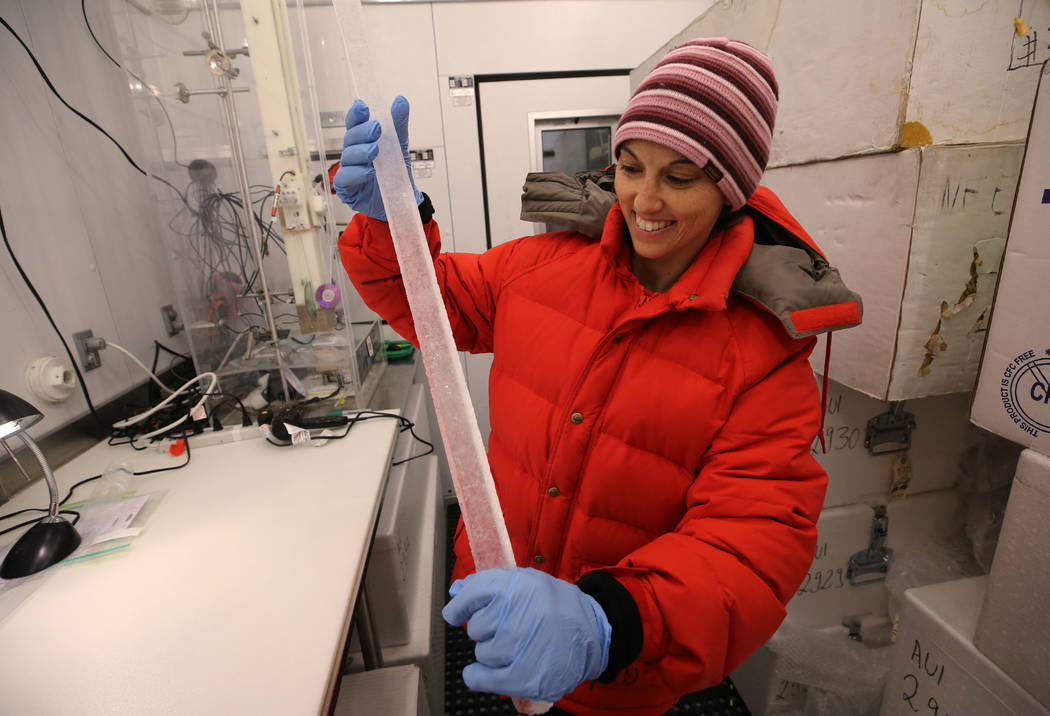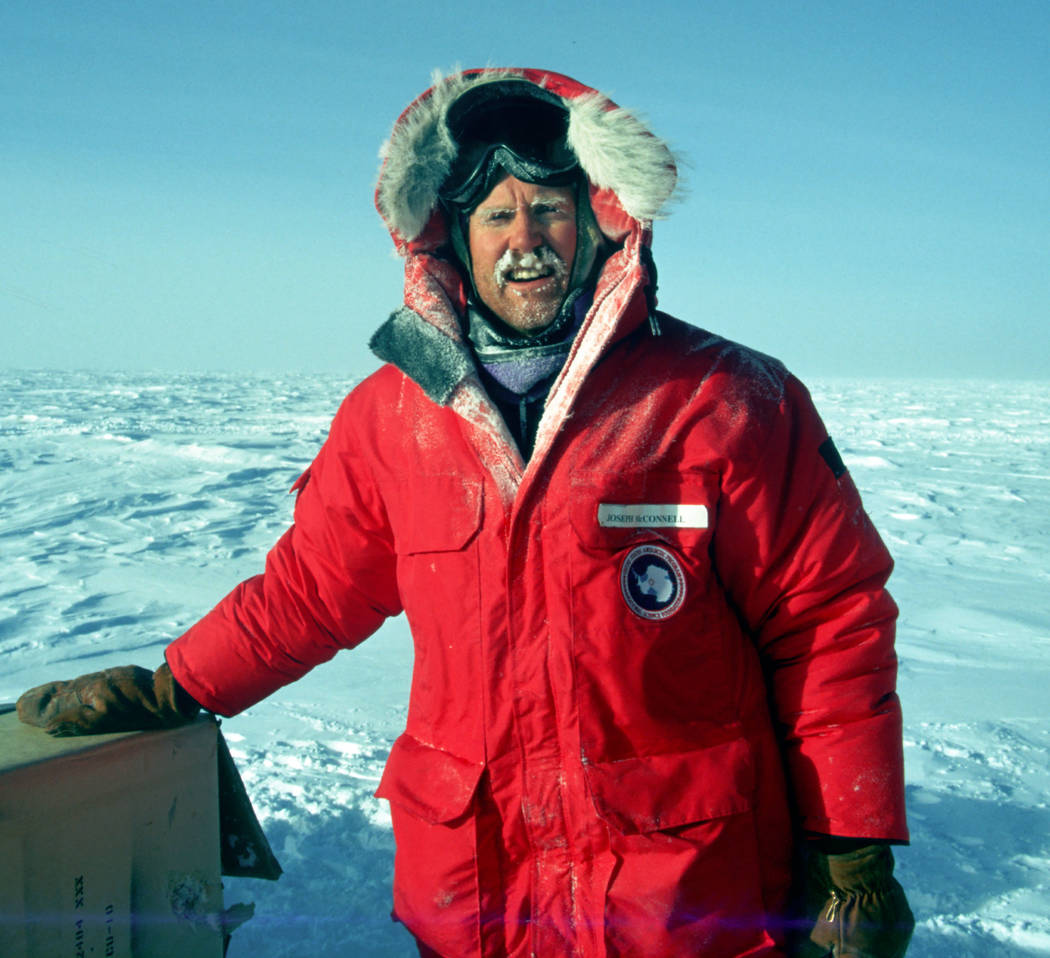Nevada researchers trace rise, fall of Roman Empire through ice
The rise and fall of the Roman Empire isn’t just recorded in history books.
Scientists from the Desert Research Institute in Nevada have pioneered a way to pinpoint pivotal moments in Western civilization using ancient lead pollution trapped deep inside the Greenland ice sheet.

A new ice core study by DRI and partners in Great Britain, Norway and Denmark charts the ebb and flow of economic activity over 1,900 years of war, plague, imperial expansion and collapse. The research provides new insight and challenges some ideas about how early European societies fared over time.
As the ancient Greeks and Romans mined and smelted silver, mostly for use as currency, they also generated lead pollution that was carried by the wind and deposited on the the ice in Greenland, some 2,800 miles away. Year after year, those emissions were covered over with ice and snow, resulting in distinct layers that researchers at DRI can now identify and date with astonishing accuracy.
Crystallizing history
“It’s amazing the information we can get from a single piece of ice,” said DRI research professor Joe McConnell, the study’s lead author.
For example, the team found that lead emissions peaked at the height of the Roman Empire, then took a sharp dive in 165 AD, when a plague, most likely smallpox, killed millions of people across Europe.
The study was conducted by an unusual, multidisciplinary team that included ice-core specialists, atmospheric scientists, archaeologists, and economic historians from DRI, the University of Oxford, the Norwegian Institute for Air Research and the University of Copenhagen.
The researchers’ findings were published last week in the Proceedings of the National Academy of Sciences.
McConnell said the team used ice cores collected two decades ago and stored in Copenhagen. Sections of those cores were transported to Reno to be methodically sampled, melted and analyzed in DRI’s one-of-a-kind ice lab to develop a continuous record of lead emissions between 1100 BC and 800 AD.
The new research builds on a previous study from the mid-1990s that focused on 18 lead measurements in Greenland ice covering the same 1,900-year span.
This time around, researchers were able to collect more than 21,000 precise measurements of lead and other chemicals.
Working to extend timeline
Even McConnell was surprised they were able to produce such a coherent and understandable chronology using such low concentrations of lead. Emissions during the Roman Empire were 40 to 50 times lower than what’s been pumped into the atmosphere over the past 100 years, he noted. “We’re pretty dirty these days.”
McConnell said he learned a lot about history as a result of the collaboration.
DRI’s ice-core expertise is now being used to track economic activity in Europe from the Middle Ages to the modern age, though that analysis is proving more complicated because there were so many more sources of lead pollution during that time.
“The next thing I’d like to do is expand this in the other direction, back to the Egyptian Empire,” McConnell said.
First, though, he needs to find someone with enough silver to pay for the research. “Maybe I need a pharaoh,” he said.
Contact Henry Brean at hbrean@reviewjournal.com or 702-383-0350. Follow @RefriedBrean on Twitter.




















